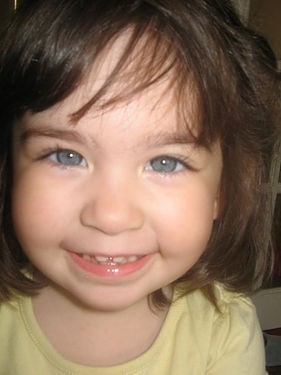If you haven’t read part one, follow the link here .
By the time our daughter was nearly a year old, she had already been through a lot. But, there was still a lot to come. This partly led to a fear of doctors and needles that we are still trying to overcome.
More Tests
The doctors wanted to do more tests, so they referred us to the genetics team at St Thomas Hospital in London. We decided to try and make the best day of it that you can. So we made it part of a day trip to London and took her to the London Eye, the London Aquarium and even McDonalds.
When the time came for the test, she wasn’t pleased with another hospital visit. When we walked into the room, it was quiet as we were the only ones waiting. When we had booked into reception, we took a seat by the toys and waited for the consultant to call us.

He said that the tests have come back positive for Ehlers Danlos based on the Beightons score. This wasn’t the most severe form, but it would effect her life. We knew that this would be the outcome, but having it told to you still left us uncertain as to what the future would hold.
Life Adjustments
We were told that there were a lot of things she wouldn’t be able to do. This included poppers, buttons, zips and other fine motor skills. We were also told that most sports should be avoided because of potential injury. Not only because her bleeding is slower than others, but also because of internal bleeding. Also she may damage her joints for later in life as my wife did.
We discussed what things we would let her do. They advised that apart from swimming, she shouldn’t do any other sports. We thought that this was a bit restrictive as she was so active and really wanted to do things.
One thing that we were unsure about was ballet. She wanted to do it, and we heard that it would help her balance and strength in her legs. We decided that we wouldn’t let her go too far and we would always keep an eye on pain and other problems.
She did ballet for 4 years and really enjoyed it. Her co-ordination, balance and strength all improved. In the last few months, she started to get pain in her legs and wasn’t enjoying it so we stopped.
We also had to liaise with her nursery and primary school to make sure she didn’t do contact sports and to know what to do if she hurt herself. All she really needed was an ice pack on the injury, though this was to become the hardest battle we had with her school.
More Challenges to Come
Our daughter is now 10 years old and about to go to secondary school. She is so good with her condition that she knows what she can and can’t do. We are thinking ahead to the future and how things like periods etc. will pan out. All we can do is take each situation as it goes and carry on.
Our biggest battle has been with others who think that just because she looks well on the outside, that she doesn’t have anything wrong. Although she can do much that others can, there are restrictions, but they think they can just do as they would with other children.
This is our story so far.
Originally published at stevenpdaws.wixsite.com on March 10, 2017.
If you want to follow me on social media, the links are below.
Originally published at medium.com


